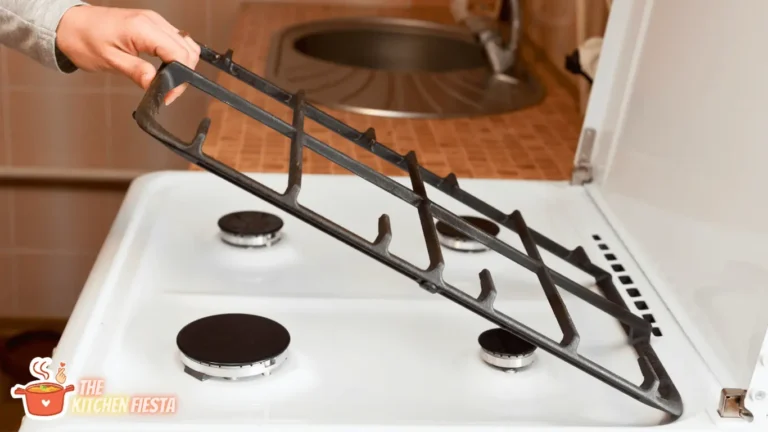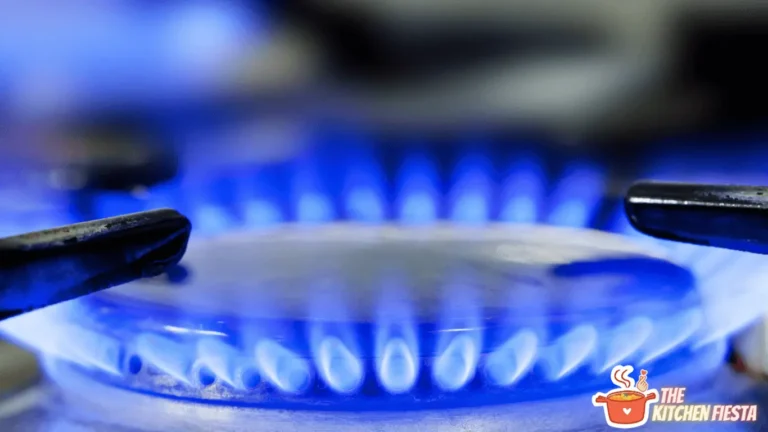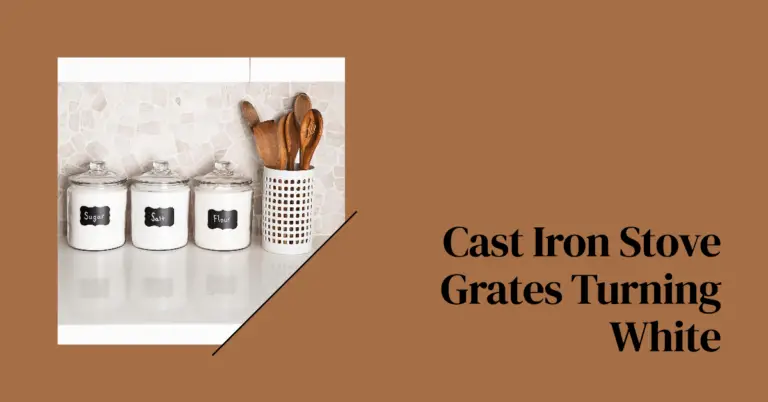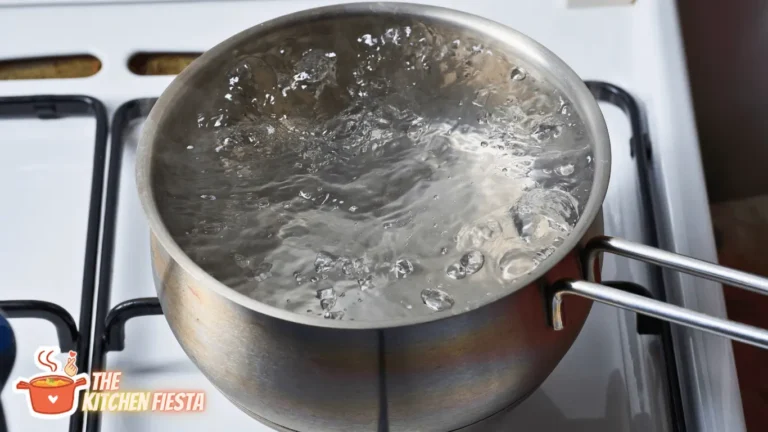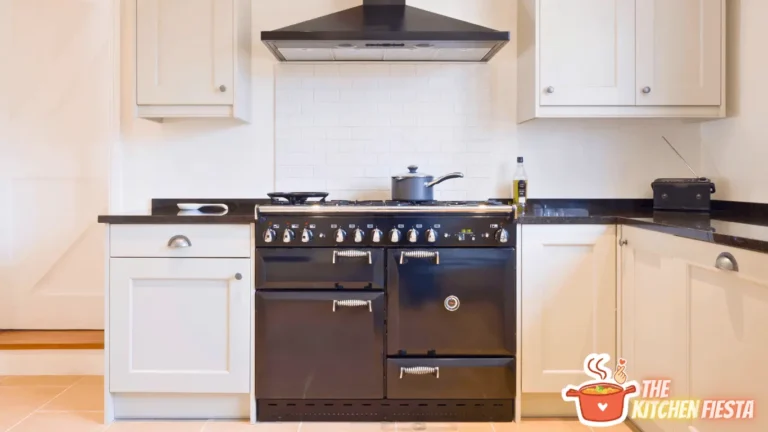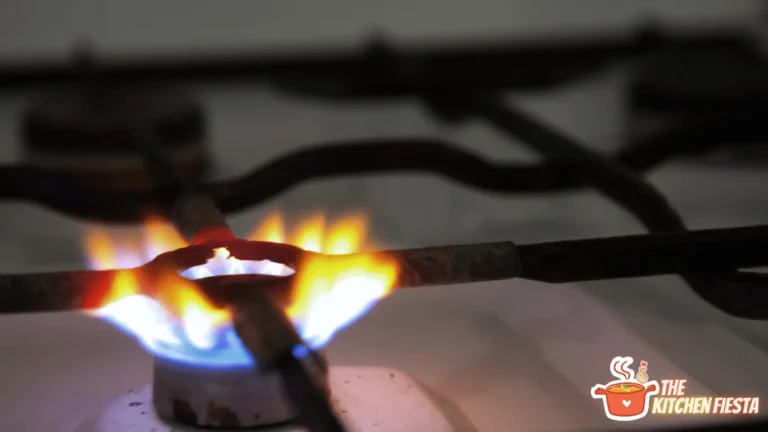Do Gas Ranges Have Built-In Regulators? A Guide to Stove Pressure Control
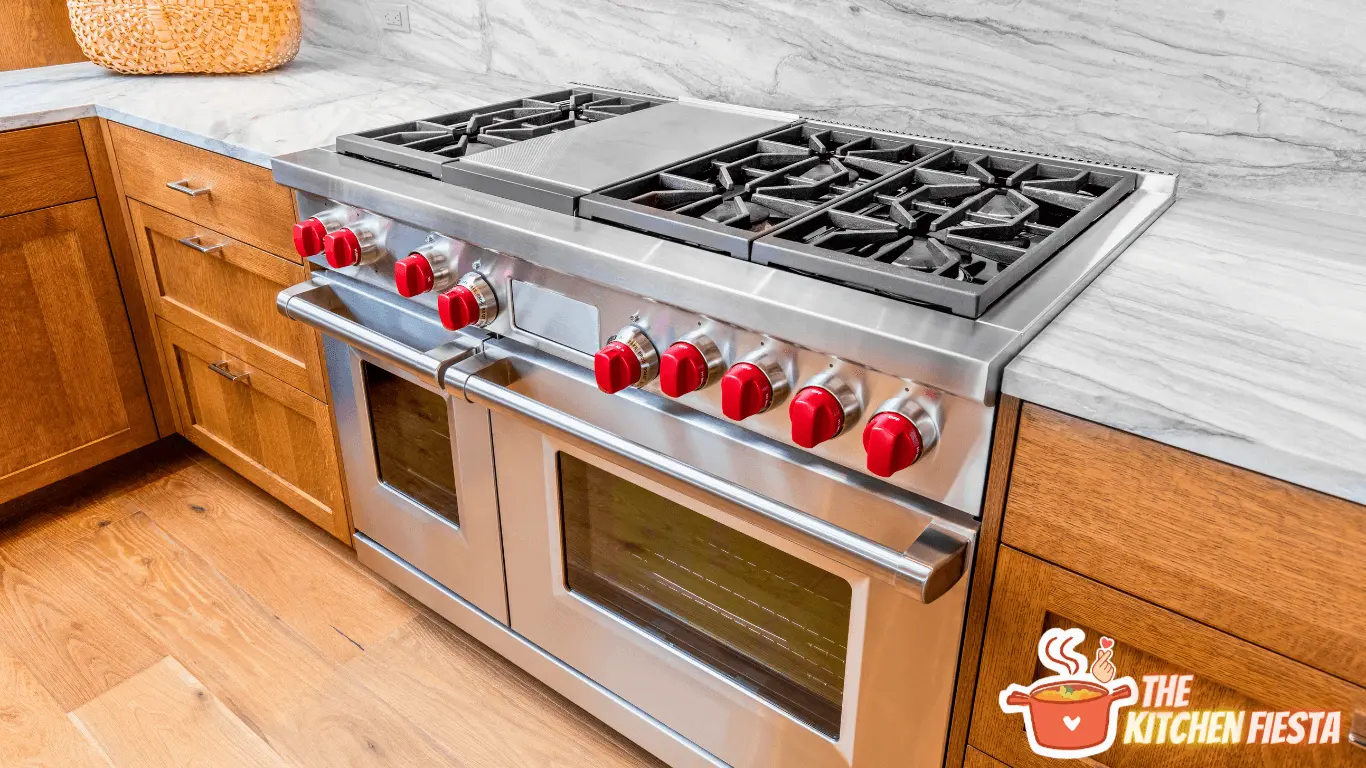
Cooking with gas is a preferred choice for many home chefs. The instant heat and responsive temperature control of gas ranges make them a top pick for passionate cooks.
However, gas appliances require proper gas pressure regulation to function safely and effectively. Do gas ranges have built-in regulators?
The answer is: some do, but not all. Gas range pressure regulation depends on the age and model. While newer ranges often include built-in regulators, older models may require installing an external regulator.
This guide provides a detailed look at gas range pressure regulation. You’ll learn how regulators work, signs your range needs one, installation tips, pressure adjustments, and maintenance. Equipped with this knowledge, you can ensure your gas range has the right pressure for safe, high-performance cooking.
How Gas Pressure Regulation Works
To understand if your range requires a regulator, it helps to first learn what gas regulators do and why pressure regulation is essential.
What Is a Gas Regulator?
A gas regulator is a device that controls and reduces the pressure of gas flowing into a gas appliance. Regulators connect to the gas supply line and reduce incoming high pressure down to a safe, consistent outlet pressure that appliances need.
For example, natural gas enters a home at high pressure around 7-10 inches water column (w.c.). Without a regulator, this pressure could damage gas appliances not built to handle it.
Regulators reduce the inlet pressure down to the appliance’s specified operating pressure, like 4-6 inches w.c. for a stove. This lower pressure is delivered to the burners for proper combustion.
Why Gas Pressure Regulation Is Critical
Maintaining the right gas pressure is crucial for safe operation and performance of gas appliances like ranges.
If gas pressure is too high, it can:
- Damage range components like valves, piping, and seals
- Cause burner flames to lift, spread, or detach – increasing fire risk
- Result in incomplete combustion and higher carbon monoxide levels
Low gas pressure can also be problematic, leading to:
- Weak burner ignition and flame outages
- Sooting from incomplete combustion
- Appliances not heating fully or at all
By reducing the inlet pressure, regulators prevent these issues and risks.
Typical Gas Supply Pressure
The amount of pressure reduction needed depends on your gas supply:
- Natural gas is delivered at high pressures of 7-10 inches w.c. typical, requiring regulators to lower pressure.
- Propane tanks supply gas at 10-13 inches w.c. depending on fill level, also needing reduction.
- LP gas from large bulk tanks is pressurized to 10-40+ psig, requiring multi-stage regulators.
Gas companies maintain supply pressures high enough to deliver sufficient volumes to customers. Without regulators, this pressure would overload appliances.
Safe Operating Pressure for Appliances
While supply pressures vary, appliances require low consistent pressures:
- Natural gas ranges need 4-6 inches w.c. pressure.
- Propane ranges require 10-13 inches w.c.
- Gas ovens operate at just 4 inches w.c.
These pressures are precise for each burner and cannot deviate much. Too low and ignition fails. Too high causes safety issues.
This demonstrates why regulators are vital – to convert the high inlet pressures to these exact appliance pressures needed.
Do Gas Ranges Have a Built-In Regulator?
Now that you understand why gas pressure regulation matters, do modern gas ranges have integrated regulators or require external ones?
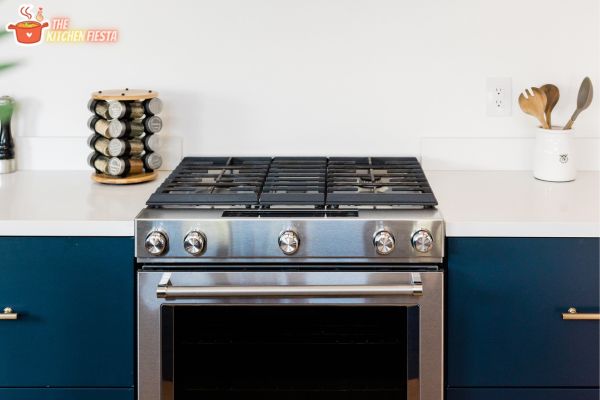
The answer depends on the age and type of your range.
Newer Ranges Often Have Integrated Regulators
In the past 20-30 years, gas range manufacturers began including regulators internally within stoves.
This makes installation easier, avoiding the need to mount a separate external regulator. Check your owner’s manual to confirm if a regulator is built-in.
Many freestanding, slide-in, and drop-in style ranges now include integrated regulators pre-set at the factory. So connecting the gas line is simpler.
Older Ranges May Lack Integrated Regulators
With older gas ranges, especially those over 30 years old, there is a higher likelihood regulators are not included.
Instead, these models were designed to use an external gas pressure regulator installed at the point the gas supply line enters the range.
Without this external regulator, an older range would receive full incoming line pressure, potentially damaging valves or causing combustion issues.
So when using an older gas stove, check that a regulator is present somewhere in the supply line leading to the unit.
Separate External Regulators
Even if you have a modern range with a built-in regulator, you may also find an external regulator installed. This is located near the main gas supply line entrance into the home.
Having this regulator upstream as a backup helps ensure gas pressure is reduced before even reaching appliances. It provides an added level of protection.
So your setup may include both an external regulator at the home entrance, plus individual regulators inside modern appliances.
Signs Your Range Lacks a Regulator
For older ranges, how can you tell if a critical regulator is missing? Signs include:
- No regulator specified in range documentation
- Evidence of flame abnormalities like lifting or sooting
- Gas leaks detected around range valves or piping
- Appliance damage from excess pressure
You may also directly measure the gas pressure coming into the range. Pressures above 6-7 inches w.c. indicate a regulator is needed to reduce before the burners.
The safest option on older ranges is installing an external regulator if the stoves lack one internally.
Installing a Gas Pressure Regulator
For gas ranges without integrated regulators, installing an external one is vital for safety and performance.
Follow these steps to properly add a regulator:
Choose an Approved Range Regulator
Purchase a regulator approved for gas cooking appliances. Two types are available:
- Appliance regulators – For connecting directly to a range or oven. Inexpensive but more prone to clogging.
- Line regulators – Install in the main home gas supply line. More heavy duty for all appliances.
Match the regulator’s pipe size and threads to your supply line. Common sizes are 3/4″ or 1/2″ NPT thread.
Pick a Suitable Installation Location
Mount the regulator on the gas supply pipe as close to the range inlet as possible. This prevents pressure build-up across long unregulated runs.
Ensure the location is:
- Accessible – Allow access to adjust regulator in future
- Protected – Keep regulator away from elements like weather
- Ventilated – Avoid confined spaces with no airflow
Install Regulator According to Codes
Comply with local plumbing codes during regulator installation:
- Use new black iron or corrugated stainless steel gas piping only.
- Apply approved thread sealant to connect regulator. Do not over-tighten.
- Mount regulator upright and level with directional flow arrow pointing towards appliance.
- Position at least 3 inches from walls and 6 inches above any flooring.
Perform a Pressure Test
Once installed, conduct a leak test on all connections and measure gas pressure. Confirm the regulator outlet pressure reaches the appliance’s specified operating pressure (4-6 inches w.c. for a range).
The regulator is now setup to provide the right gas pressure to your range burners.
Gas Range Pressure Adjustments
If your gas range has a built-in or external regulator, the outlet pressure may need adjustment for optimal performance.
Warning – only qualified professionals should adjust gas pressures. But here is what’s involved:
Adjusting a Range Regulator
Regulators have a spring-loaded diaphragm that reduces pressure. Turning an adjustment screw compresses this spring to increase or decrease outlet pressure.
You’ll need a manometer to measure and adjust outlet pressure. Turn the regulator screw slowly while monitoring pressure until within the range specified for the appliance.
Troubleshooting Gas Pressure Problems
If gas pressure is too high or low, issues to check include:
- Regulator failure – Test regulator and replace if faulty
- Supply pressure fluctuations – Install supply pressure gauge to monitor
- Clogged regulator – Clean regulator debris filters
- Leaks – Seal any gas leaks allowing pressure changes
Testing and Replacing Regulators
With chronic pressure issues, regulators may require replacement. Warning – only a qualified technician should replace or remove gas regulators. Steps include:
- Shut off gas supply and relieve line pressure
- Disconnect old regulator and remove it
- Install new approved regulator of same type
- Check for leaks, re-test pressure, restore gas supply
Propane and Natural Gas Pressure Differences
Propane and natural gas operate at different pressure ranges, requiring adjusted regulator settings.
Supply Pressure Varies
As covered earlier, supply pressures differ significantly:
- Natural gas: 7-10 inches w.c. typical
- Propane tanks: 10-13 inches w.c. based on fill level
- Bulk propane tanks: 10-40+ psig
So regulators must reduce the high incoming pressures down to appliance operating pressures.
Regulator Settings for Each Gas
To account for these input differences, regulators need proper configuration:
- Natural gas ranges need regulators set to 4-6 inches w.c. outlet pressure.
- Propane ranges require regulators set to 10-13 inches w.c.
- Convertible ranges need regulators adjustable within both ranges.
Consult regulator specifications to ensure the appliance operating pressure range is listed.
Converting Gas Types in Ranges
For propane ranges being converted to natural gas, or vice versa, the regulator must be adjusted to the new gas’s pressure range.
This involves re-configuring the spring tension on the regulator to alter the outlet pressure to the settings outlined above.
A gas technician can perform this adjustment along with converting range burners for the new gas type.
Gas Range Gas Pipe and Hose Requirements
Connecting ranges to gas lines involves following piping codes and recommendations:
Pipe Connector Types
Acceptable connectors include:
- Black iron pipe – Threaded directly into a range valve. Durable but rigid.
- Corrugated stainless steel – Flexible alternative to iron pipe.
- CSST with EZ fittings – Allows quick connections without threading pipe.
Recommended Line Sizes
For adequate flow, minimum pipe diameters are:
- Ranges up to 35k BTU – 1/2″ pipe
- Ranges 36k-175k BTU – 3/4″ pipe
- High BTU pro-style ranges – 1″ pipe or greater
Bigger is better to prevent pressure drops.
Flexible vs Rigid Connections
Choose based on range needs:
- Freestanding ranges can use flexible connectors to allow pulling ranges out for cleaning.
- Built-in ranges often require rigid piping direct into a valve.
But flexible connectors add failure points from crimping or wear over time.
Signs of Gas Pressure Problems
Watch for these indicators of improper gas pressure requiring regulator adjustments:
High Pressure Symptoms
- Loud range gas valves when opening
- Flames lifting off burners
- Burners won’t light or go out when set to low
- Sooting in oven or on cooktop
- Gas leaks detected
Low Pressure Symptoms
- Burners igniting weakly or slowly
- Burners not reaching full heat levels
- Ovens heating unevenly or slowly
- Pilot lights going out frequently
Checking Appliance Connections
Examine the regulator, valves, piping, and hoses for:
- Damage from excess pressure like crimped pipes
- Signs of leaks including smells or pipe corrosion
- Blockages from debris restricting flow
How to Spot Regulator Failures
If regulators are malfunctioning, you may detect:
- No gas flow even with supply pressure – regulator stuck closed
- Supply pressure on outlet side – regulator stuck open
- Inability to adjust or measure outlet pressure
In these cases, replacement is needed.
Maintaining Proper Gas Pressure
Follow these tips to keep your gas appliances operating at safe pressures:
- Have a technician periodically inspect regulators and supply piping. Annual checks recommended.
- If any new pressure issues arise, have regulators tested and adjusted immediately.
- When renovating kitchens, ensure appliance regulators are installed according to manufacturer specifications.
- Consider adding general supply regulators at home entries for redundancy in case of appliance regulator failures.
Proper gas pressure regulation is a critical factor for safe functioning of gas ranges and other appliances. Following the guidance in this article will help ensure your cooking equipment operates reliably for years to come.
Conclusion
Maintaining the right gas pressure is essential for properly regulating range burners. While newer models include integrated regulators, older units likely need an external one installed. Check for any signs of improper pressure and have technicians periodically verify regulator settings. Proper gas pressure regulation in your range provides effective, efficient cooking with greater safety.

